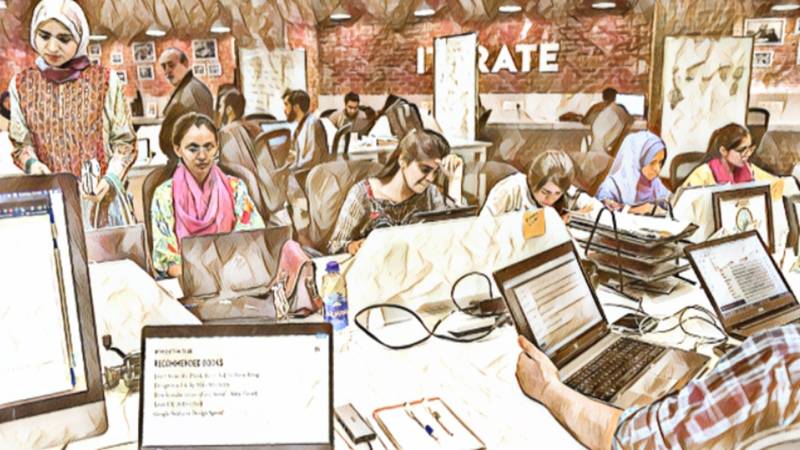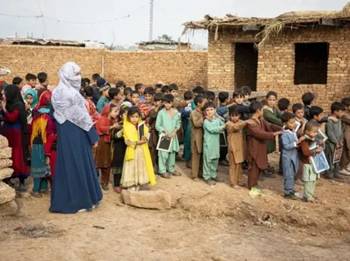
The education system of Pakistan is in shambles, with the education index at 0.4 and literacy rate 56.5% against a world average of 0.7 and 86% respectively. Its literacy rate ranking is 188th in the world. These figures are a cause for alarm. According to UNICEF, 22.8 million children are not even enrolled in schools. This is the second highest number in the world after Nigeria, and is more than the entire population of many countries. Sindh has 58% and Balochistan a whopping 78% girls not going to any school. Pakistan also has one of the highest dropout rates in the world. Even with these unfortunate statistics, no one in the leadership is striving to raise education standards.
In the world rankings of universities for 2023, LUMS stands at 611 and NUST at 738. Several Indian, Iranian, Saudi and Turkish universities and institutes fare better. There are only five Pakistani universities in the list of the world’s top 1,000, whereas Iran has 24, Turkey 23, Malaysia 19, Egypt 8 and Saudi Arabia 4. India has 38 in this list of honour.
The Quaid was very clear minded on the importance of educating the nation. He said, “Education is a matter of life and death to our nation. The world is moving so fast that if you do not educate yourselves you will be not only completely left behind, but will be finished up.”
As per this quote, we have chosen the path of death and we are finished because of the dismal state of our education. As this author wrote earlier, this is not the Quaid’s Pakistan that we live in.
From the very beginning, Pakistani leadership showed no interest in setting up institutions of higher learning for the educated and of vocational training for the semi-literate. In 1951, when India was setting up its first IIT, Pakistan founded Jamia Darul-Uloom Korangi, its first major religious seminary. There has been no looking back since then. When the US formed the South East Asian Treaty Organisation (SEATO) and made Pakistan a partner against the USSR, the Pakistani leadership could have bargained for some quality institutions of technology and higher learning. Instead, it opted for fighter jets, tanks, guns and naval craft. In 1979, with the Soviet invasion of Afghanistan, the US needed Pakistan as a launching pad for its jihad. Our leaders again failed to ask the US to set up institutions of education and vocational training, and revamp of railways and road infrastructure. Instead, the ruling junta settled for acceptance and continuity of personal rule, fighter jets, attack helicopters, Stingers and a few other pieces of hardware. Not only this, it also promoted a culture of madrassahs instead of secular education in sciences and arts.
Once again, during the US invasion of Afghanistan in the aftermath of 9/11, Pakistan became crucial as the only viable route to the battlefields. Unfortunately, Pakistan again opted for a fistful of dollars, new squadrons of fighter jets and other military hardware. Our roads and railways were heavily used by US military cargo carriers from the seaports to Quetta and Peshawar. A corridor of airspace was reserved for US fighter, intelligence and cargo aircraft from the Arabian Sea to Afghanistan. The military junta failed to capitalise on the situation to acquire institutions of higher learning, vocational training and allied infrastructure. This was the third missed chance to improve our technical and vocational education. Unfortunately, neither the military rulers of the time nor the civilian leadership thereafter considered education in science and technology to be of any consequence. The onus for the dismal state of education lies not in our fate but on our own errors of omission. A myopic leadership only thinks in terms of its own survival and enrichment, but not in terms of the welfare of its people. Our star-crossed nation, in the words of the late civil servant, Mukhtar Masood, suffers from qaht-ur-rajjal, or dearth of men of calibre.

India lies on the cusp of world leadership because its unbroken democracy has produced leaders who placed their own interests subservient to national interests and paid due deference to promoting the education of its people. The Indian leadership was far more nationalist, people-friendly and far-sighted. India’s lead in education has been the result of commitment to education. Soon after independence, the West Bengal government, with the active support of Pundit Nehru and Maulana Azad, set up the first Indian Institute of Technology (IIT) near Calcutta in 1951. It was envisaged to run on the lines of the Massachusetts Institute of Technology (MIT) in the US. As relations with the USSR improved, it was encouraged to set up the second IIT in Bombay in 1958. To counter Soviet influence, the US offered to set up the third IIT in Kanpur in 1959. When the Germans ran up a huge trade surplus, the Indian leadership asked them to set up the fourth IIT in Bangalore. Then the demand to set up an IIT in the north gained momentum and IIT Delhi was established in 1961. Now there are 23 IITs throughout the country, whose graduates rule the field of technology in India and the US.
This is not to say that the picture is completely dismal in Pakistan. There certainly are some bright spots in education sector that give hope. Pakistan established a series of PAF/Cadet Schools/Colleges including at Hasanabdal, Sargodha (this author’s alma mater), Lower Topa, Petaro, Kohat, etc. The groups of Crescent, Divisional and Punjab colleges too have significantly contributed to the education. The chains of Beacon House, City Schools and Roots Millennium are doing a commendable job in imparting quality education. The three services have played a healthy role in establishing schools, colleges and universities for the public in the fields of humanities, engineering and medicine. Dow, NED, KE, LUMS, AKMU, AMC, QAU, GIK, IST and NUST are excellent institutions of higher education. Some of the pre-independence colleges/universities, too, are providing good education.
For a nation of 220 million, however, this is not sufficient and the environment in these institutions has increasingly become doctrinal. Liberal and secular space, very vital for independent thinking, has shrunk significantly. There should have been many more and better educational institutions. Educational institutions must be established in every district of the country instead of their concentration along the GT Road.
Overall, picture of the country is, therefore, disappointing. The religious elements do not allow breathing space to individual choices and thinking. A vast majority of students as well as their teachers, including professors in institutions of higher learning, earnestly believe that freedom of thought, speech and actions must be tempered with religious conformity; not realising that conformist behaviour subdues new ideas and innovation.
Tragically, even the most literate in our society believe in the spiritual powers of clerics, peers, gaddi-nasheens and muftis in matters of science and arts. They believe that any new thought must be approved by clerics who, in reality, would hardly have any idea of the subject under discussion. It is no wonder, then, that some religious leaders and their followers believe that a few rounds of a prayer bead can cure cardiac diseases, renal failure, erectile dysfunction, reproductive sterility, psychological disorders and every biological ailment. This way of thinking discourages scholarship and research, and produces a brainless populace: the kind of nation that Pakistan has become.
Pakistan needs massive investment into education. Without universal, inclusive and government-financed education, coupled with secular, broad-based and science-oriented curricula, the nation can neither progress nor become a respected member of the international community.

